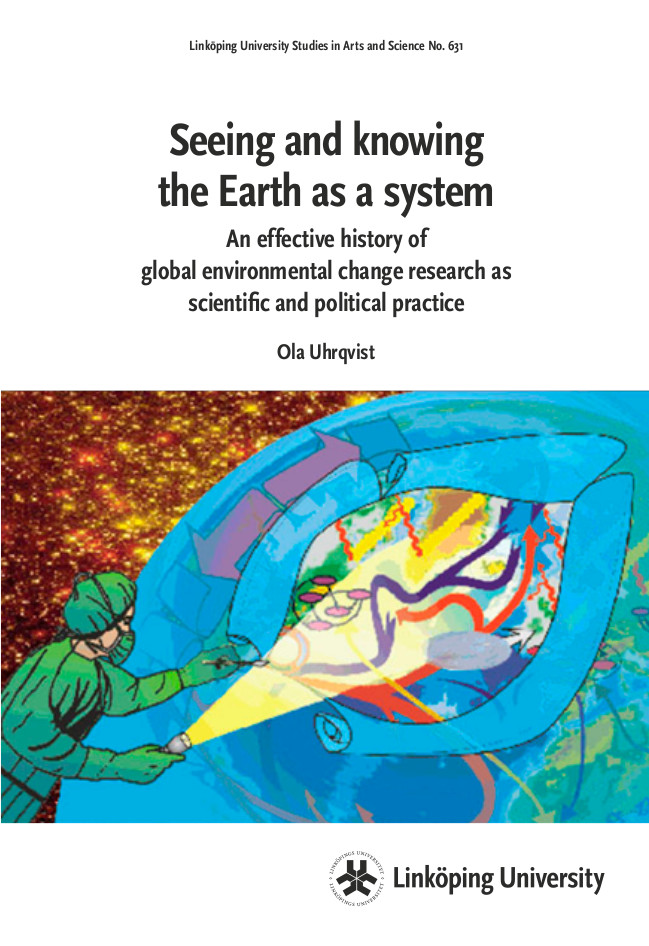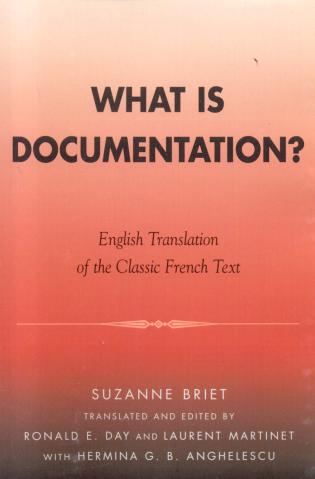Ola Uhrqvist: Seeing and Knowing the Earth as a System: An Effective History of Global Environmental Change Research as Scientific and Political Practice (2014)
Filed under book, thesis | Tags: · anthropocene, climate crisis, earth, earth system, environment, governance, knowledge, knowledge production

“Previous research connecting scientific knowledge production with governing of the global environment usually start in international climate change negotiations and related assessments. From that vantage point Earth system science and models are studied as an expansion of Global Circulation Models. By tracing of the history of the present Earth system outlook this thesis offers a reflection about how scientific knowledge produce and connects problems with descriptions of desired order of things and strategies to get there. Knowledge becomes a productive power by shaping fields of possible action in relation to the global environment.
The interpreted empirical material consists of scientific discussions from the International global environmental change programmes and particularly the International Geosphere-Biosphere Programme (IGBP) and the International Human Dimensions Programme on global environmental change (IHDP). The studied period spans from the start of the planning of the IGBP in 1983 to the presentation of the new research programme Future Earth in 2013. The thesis is organised around the effects of the IGBP’s strategy to use predictive Earth system models as a tool to bring a broad range of scientific disciplines together.
The results demonstrate the historicity of the present Earth system outlook by showing how ecosystems and human dimensions were attributed new and more important roles as drivers of global change. The thesis also argue for the need to approach the ‘Earth system’ as a result of a productive tension between top-down perspectives found in global modelling and bottom-up empirical research engaging with process interactions down to local scales.”
Publisher Linköping University Electronic Press, Linköping, 2014
Open access
ISBN 9789175192369
91 pages
PDF, PDF (updated on 2018-6-11)
Comment (0)Ellen Røed: Skyvelære (2014)
Filed under thesis | Tags: · art, artistic research, calibration, gesture, knowledge production, measurement, representation, science, sun, time, video art, weather

Composed of the words sliding and knowing, the Norwegian term skyvelære means caliper, a device for measuring distance. In her research Ellen Røed reflects on devices and procedures that are used in video art and in the natural sciences. She considers various relationships involved in creating representations; field trips, story telling, gathering or capturing of data, measuring and calibrating.
Critical Reflection on Artistic Results of a Fellowship Project in Artistic Research
Bergen Academy of Art and Design, 2014
143 pages
Book version (added on 2016-10-13)
PDF (15 MB)
Accompanying video Skyvelære (While Attempting to Balance) (2013, 276 MB, MOV)
Suzanne Briet: What is Documentation? (1951/2006) [French, English]
Filed under book | Tags: · bibliography, cultural techniques, data, document, information, knowledge, knowledge production, library

Born in Paris in 1894, Suzanne Briet was active in the development of what was then known as Documentation but would now be called Information Management or Information Science. In 1931, she participated in founding the Union Française des Organismes de Documentation (UFOD). She was a leader in developing professional education for this new specialty and designed a plan for what would have been the first school of Documentation / Information Science worldwide, had it been established. In 1951, when a school of information science was finally established, Briet was the founding Director of Studies. She became Vice President of the International Federation for Documentation (FID) and acquired the nickname “Madame Documentation.”
What is Documentation? relates this fascinating story and includes the first English translation of Briet’s remarkable manifesto on the nature of documentation, Qu’est-ce que la documentation?. Part I sought to push the boundaries of the field beyond texts to include any material form of evidence (“Is a living animal a document?” she asked). Part II argued that a new and distinct profession was emerging. Part III urged the societal need for new and active documentary services.
This tract remains significant due to its continuing relevance towards understanding the nature, scope, and societal impacts of documents and documentation. Briet’s modernist perspective, combined with semiotics, deserves attention now because it offers a sturdy and insightful alternative to the scientific, positivist view that has so dominated information science and which is increasingly questioned.
Publisher EDIT, Paris, 1951
48 pages
via Laurent Martinet
English edition
Translated and edited by Ronald E. Day and Laurent Martinet with Hermina G. B. Anghelescu
Publisher Scarecrow Press, 2006
84 pages
via Ronald E. Day
Reviews: W. Bede Mitchell (College & Research Libraries, 2007), Jonathan Furner (Libraries & the Cultural Record, 2008).
Publisher (EN)
Qu’est-ce que la documentation? (French, 1951, updated on 2017-11-16)
What is Documentation? (English, 2006, PDFs), single PDF (OCR’d, added 2014-8-14 via Marcell Mars)

